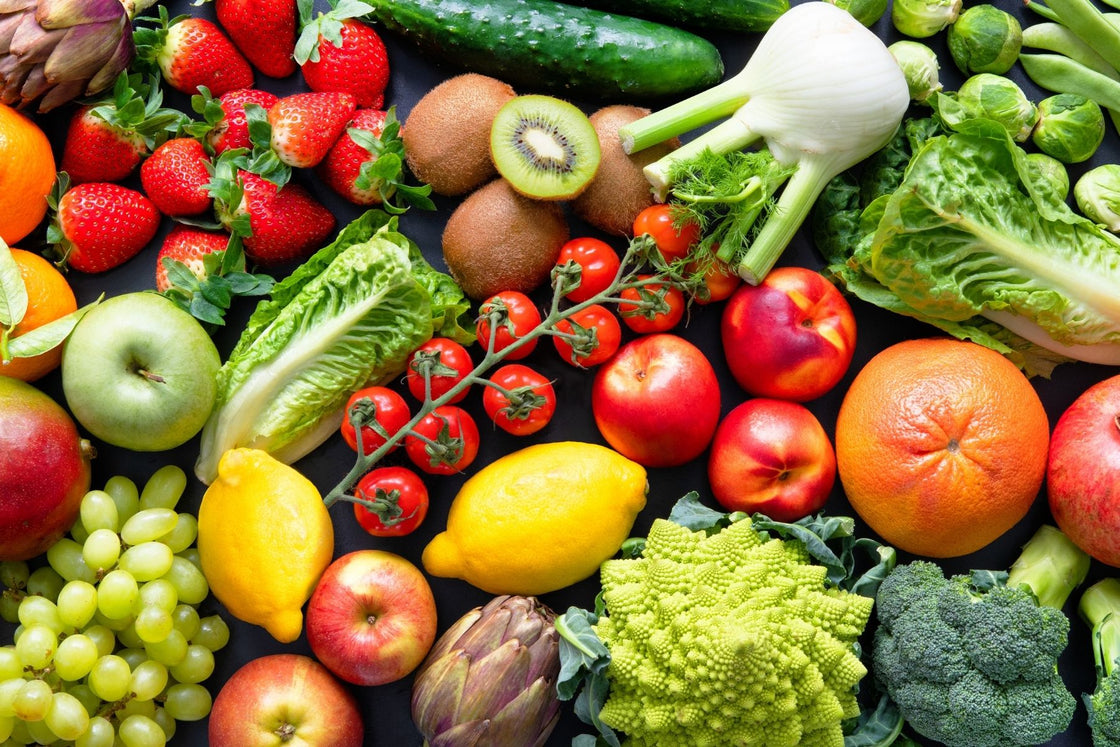According to research, simply eating more fruits and vegetable could quickly cool down your menopause! Food Scientist and Nutritionist Susie Debice explains why women in the West should re-think their 5-a-day. Why? Because Japanese women, who eat up to 16 portions of fruit and vegetables a day, gracefully breeze their way through the menopause.
The hormonal changes that occur during the menopause change your body in many ways from impacting your metabolism, to influencing your mood and even changing the rate at which your body burns fat. All these factors contribute to symptoms such as weight gain, hot flushes, night sweats, low libido, anxiety and days or feeling tired, overwhelmed and depressed. But have you ever considered that your menopause could simply be linked to the amount of fruit and vegetables in your daily diet?
Eat more plants!
A study involving 400 menopausal women assessed the link between different dietary patterns and the possible link to the occurrence of menopausal symptoms. Although the women had quite varied diets the researchers identified three distinct dietary patterns:
- vegetables and fruits
- mayonnaise, liquid oils, sweets, and desserts
- solid fats and snacks
What’s fascinating is that the study revealed that the women who followed the eating pattern of vegetables and fruits tended to experience fewer of the general, physical and mental symptoms associated with the menopause.
Whereas the women whose diets featured highly in oils, fats, sugary foods and snacks tended to have an higher level of menopausal symptoms. These findings are in line with other research studies that have looked at the role of diet for menopausal symptoms.
Is 5 a day enough?
Current health advice from Public Health England is to consume five portions of fruit and vegetables a day. However, it seems that many countries across the globe are placing more of an importance on dietary intakes of fresh fruits and vegetables.
Danish recommendations are for six a day, the French advise 10 a day, the Canadians suggest consuming between five and 10 portions a day and the Japanese government has a clear statement of 13 portions of vegetables accompanied by four portions of fruits a day.
Japanese wisdom
It’s rather intriguing that not only are the Japanese renowned for their longevity, but Japanese women experience far fewer difficulties with the menopause compared to women of Western cultures.
If your menopausal symptoms have become too hot to handle, then maybe it’s time to assess your dietary levels of fruits and vegetables and looking to the Japanese for inspiration and motivation.
Diet diary
Track the number of fruits and vegetables you actually eat across the week with a two-week food diary.
Jotting down what you eat at each meal and snack gives you realistic knowledge about the total portions you a constantly achieving.
Go through your food diary at the end of the week and highlight each portion of fruit and vegetables that you can find.
Review your daily totals to find out if you are consistently achieving 5-a-day, you may find that the results are on the low side.
Look back over your two-week food diary and see where you could easily swap in an extra portion (or two!) of fruit, salad or vegetables, an easy step for a smoother menopause. See below for my go-to healthy swap suggestions.
7 easy ways to top up on fruit and vegetables.
- Add some berries of fresh shopped fruit to your morning cereal.
- Swap your morning toast for a healthy green avocado, spinach, lime, cucumber, kiwi and mint smoothie made with coconut water or plant milk.
- Swap snacks likes crisps or nuts for celery sticks with nut butter or carrot and pepper crudites with humous.
- Swap sweet snacks such as cakes and biscuits for a piece of fresh fruit.
- Swap sandwiches for lunch with a rainbow layered salad topped with your favourite sandwich filling.
- Always serve a side of two to three vegetables with your evening meal – peas, broccoli, green beans, cabbage, kale, carrots, etc.
- Join the plant-based revolution and go meat-free for two days a week! Enjoy a range of vegetable soups and veggie curries as your main meals.



